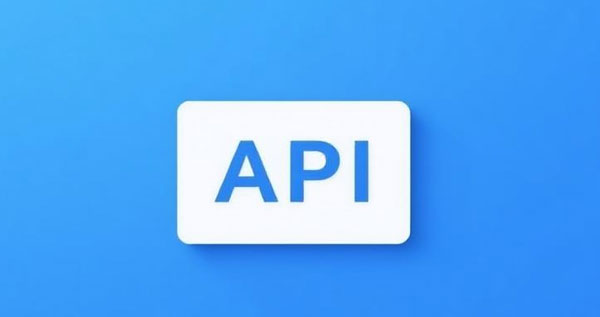Building a Real-Time Monitoring Pipeline: Tracking Taobao Price and Promotion Changes Using Kafka + Spark Streaming
In today’s data-driven e-commerce landscape, changes in product prices and promotions often signal business opportunities or risks. For companies focusing on competitive monitoring, dynamic pricing, and marketing automation, having a robust, scalable, and real-time data pipeline to track changes on platforms like Taobao is crucial.
This article explores how to build a scalable, real-time, and resilient monitoring pipeline using Kafka and Spark Streaming to detect and respond to pricing and promotional shifts on Taobao.
1. System Architecture Overview
Architecture Diagram
[Taobao API / Scrapy Crawler]↓
Kafka Producer
↓
Kafka Cluster (Multiple Topics)
↓
Spark Streaming Processing
↓
Push Alerts via Webhook / Store in Database
The system is divided into four major modules covering data ingestion, transmission, real-time processing, and downstream applications:
Data Source Module: Uses scheduled API calls or Scrapy crawlers to extract product information from Taobao in JSON format.
Kafka Middleware Module: Kafka acts as a high-throughput, fault-tolerant message broker. Different types of information are separated into dedicated topics.
Spark Streaming Module: Spark Structured Streaming consumes and processes Kafka messages in real time based on business logic.
Downstream Application Module: Depending on the event, alerts are pushed to Webhooks or stored in databases for further analysis and action.
2. Kafka Deployment and Topic Design
Basic Kafka Configuration and High Availability
Recommended minimum setup includes 3 Kafka brokers for high availability and data replication.
Zookeeper is used for managing the cluster, including broker registration and topic metadata.
Retention policies should align with business needs—for example, a 7-day retention for price monitoring use cases.
Topic Design Recommendations
Topic Name | Data Type | Partitions | Design Notes |
|---|---|---|---|
| Product ID + Price Info | 6 | Use hash-based partitioning by category to avoid skew |
| Promotion JSON Structure | 3 | For tracking time-sensitive campaigns (e.g., discounts) |
| Static Info (title, stock) | 3 | Helps with data enrichment and correlation |
This topic separation ensures clean data classification and efficient downstream processing with minimal contention.
Kafka Producer Example (Python)
from kafka import KafkaProducerimport json
producer = KafkaProducer(
bootstrap_servers='localhost:9092',
value_serializer=lambda v: json.dumps(v).encode('utf-8')
)
product_data = {
"product_id": "123456",
"title": "Xiaomi Headphones",
"price": 99.0,
"timestamp": "2024-04-01T10:20:00"
}
producer.send("taobao_price", value=product_data)
producer.flush()
In production, it’s recommended to add batching, retry logic, and error logging for enhanced stability.
3. Integrating Spark Streaming with Kafka
Why Choose Structured Streaming
Structured Streaming, introduced in Spark 2.0, offers several advantages:
Supports DataFrame and SQL operations
Handles event-time processing and watermarking
Improved fault tolerance and operational stability
Initialization and Data Parsing Example
from pyspark.sql import SparkSessionfrom pyspark.sql.functions import from_json, col
from pyspark.sql.types import StructType, StringType, DoubleType
spark = SparkSession.builder \
.appName("TaobaoPriceMonitor") \
.getOrCreate()
schema = StructType() \
.add("product_id", StringType()) \
.add("title", StringType()) \
.add("price", DoubleType()) \
.add("timestamp", StringType())
df = spark.readStream \
.format("kafka") \
.option("kafka.bootstrap.servers", "localhost:9092") \
.option("subscribe", "taobao_price") \
.load()
parsed = df.selectExpr("CAST(value AS STRING)") \
.select(from_json(col("value"), schema).alias("data")) \
.select("data.*")
This process converts raw Kafka messages into structured records for real-time analysis.
4. Real-Time Price Change Detection and Alerting
For example, to detect when product prices fall below 95 RMB, the following logic can be applied:
from pyspark.sql.functions import colalert_df = parsed.filter(col("price") < 95.0)
def alert_func(row):
import requests
requests.post("https://your.webhook/api", json=row.asDict())
alert_df.writeStream \
.foreach(alert_func) \
.start() \
.awaitTermination()
This allows the system to immediately notify internal platforms such as Slack, Feishu, or LINE bots when conditions are met.
For persistent storage and further analytics, the system can be integrated with ElasticSearch, MongoDB, or PostgreSQL.
5. Fault Tolerance and Performance Tuning
Checkpointing and Recovery
Structured Streaming supports checkpointing for fault recovery:
.writeStream \.option("checkpointLocation", "/tmp/kafka-checkpoints/") \
This ensures the application can recover from failures without reprocessing the entire data stream.
Performance Optimization Tips
Use a reasonable
triggerInterval(e.g., 10 seconds) to balance latency and throughput.Set
maxOffsetsPerTriggerto control how much data is processed per micro-batch and avoid memory overload.Align Kafka partition count with Spark executor resources to avoid resource imbalance.
Apply techniques such as broadcast joins and data deduplication to optimize resource usage.
Conclusion: From Raw Streams to Business Intelligence
The Kafka + Spark combination is a powerful solution for processing large-scale streaming data. For e-commerce platforms like Taobao, this architecture provides:
High-throughput and reliable data delivery
Flexible and scalable real-time analytics
Timely alerts that enable proactive business strategies
By adopting such a system, businesses can shift from reactive analysis to proactive alerts and real-time decision-making, unlocking the full potential of data engineering in digital transformation.
Articles related to APIs :
From Data to Product: Building Search, Visualization, and Real-Time Data Applications
Introduction to Taobao API: Basic Concepts and Application Scenarios
Taobao API: Authentication & Request Flow Explained with Code Examples
Using the Taobao API to Retrieve Product Information and Implement Keyword Search
How to Use the Taobao API to Build a Product Price Tracker and Alert System
Using the Taobao API to Build a Category-Based Product Recommendation System
If you need the Taobao API, feel free to contact us : support@luckdata.com




